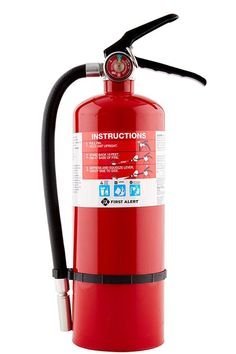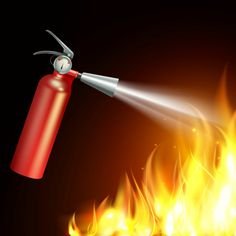Hotel Management Clasa Notes 44
Fire Extinguisher and Safety
Fire safety is a critical aspect of personal and workplace safety. Fires can occur unexpectedly and escalate rapidly, posing significant risks to life, property, and the environment. Understanding fire extinguishers, their types, proper usage, and general fire safety practices is essential for both preventing fires and effectively responding to them when they occur.

Understanding Fire:
Fire is a chemical reaction involving the rapid oxidation of a combustible material, typically with the release of heat and light. For a fire to ignite and sustain, three elements are necessary:
- Heat: Sufficient heat must be present to raise the temperature of the material to its ignition point.
- Fuel: Combustible materials such as wood, paper, fabric, flammable liquids, gases, and electrical equipment provide the fuel source.
- Oxygen: Air supplies the oxygen necessary to sustain combustion.
This trio of elements is often referred to as the “fire triangle.” Removing any one of these elements can extinguish a fire or prevent it from starting.
Classes of Fires:
Fires are categorized into different classes based on the type of fuel involved. The classification system helps determine the appropriate fire extinguisher and firefighting methods:

- Class A: Fires involving ordinary combustible materials such as wood, paper, cloth, and plastics.
- Class B: Fires fueled by flammable liquids and gases such as gasoline, oil, grease, and propane.
- Class C: Fires involving energized electrical equipment, where the primary hazard is the risk of electric shock.
- Class D: Fires involving combustible metals such as magnesium, titanium, sodium, and potassium.
- Class K: Fires involving cooking oils and fats, typically found in commercial kitchens.
Each class of fire requires a specific type of fire extinguisher designed to effectively suppress the fire without exacerbating the situation.
Types of Fire Extinguishers:
Fire extinguishers are portable devices used to extinguish or control small fires. They come in various types, each designed to tackle fires involving specific classes of materials:
- Water and Foam (Class A): Suitable for Class A fires involving ordinary combustibles. Water extinguishers are effective against materials like wood, paper, and textiles. Foam extinguishers create a barrier between the fuel and the oxygen in Class A fires, smothering the flames.
- Carbon Dioxide (CO2) (Class B and C): Effective for Class B (flammable liquids and gases) and Class C (electrical) fires. CO2 extinguishers work by displacing oxygen, effectively smothering the fire without leaving residue or causing damage to electrical equipment.
- Dry Chemical (Class A, B, and C): Multipurpose dry chemical extinguishers are suitable for Class A, B, and C fires. They contain a powder-based agent that interrupts the chemical reaction of the fire, extinguishing it rapidly.
- Halon (Class B and C): Halon extinguishers were once common for Class B and C fires but are now largely phased out due to their ozone-depleting properties. They worked by disrupting the chemical reaction of the fire.
- Wet Chemical (Class K): Specifically designed for Class K fires involving cooking oils and fats. Wet chemical extinguishers create a barrier between the oil and the oxygen, cooling the oil and preventing reignition.
- Clean Agent (Class B and C): Clean agent extinguishers use non-conductive, non-corrosive gases to suppress Class B and C fires, making them suitable for use in sensitive electronic and data equipment areas.
